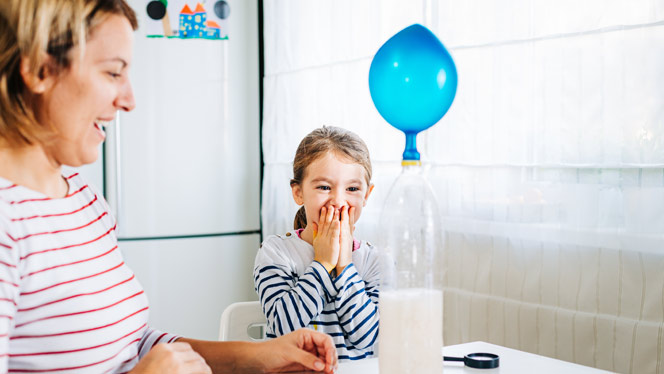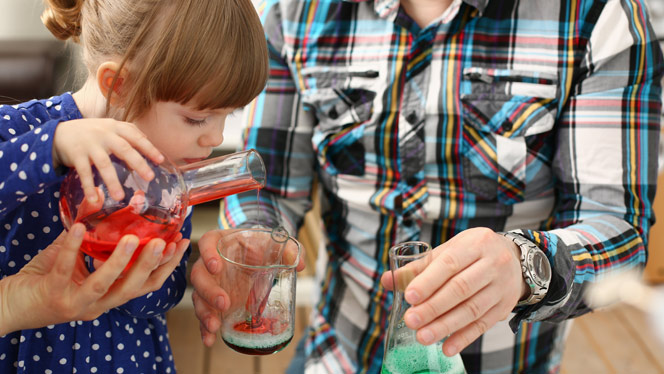Karyn Hutchinson, a science teacher at Windemere Park Charter Academy, is a big believer in the power of STEM (Science, Technology, Engineering, and Mathematics) activities. "STEM activities get kids actively involved and work areas of their brain that they don’t use in everyday life," she says. "It helps with analytical thinking and problem-solving, which are crucial for adult life."
One of the reasons Windemere Park outperforms the local district in all subjects is its emphasis on STEM education. When kids work on STEM projects, they’re not only having fun—they’re developing skills that go beyond the classroom. These activities also spark their creativity, helping them come up with ideas that might someday lead to groundbreaking inventions.
One of Hutchinson’s favorite experiments is the vinegar and baking soda balloon trick. "Kids love watching the balloon inflate as the chemical reaction produces gas," she shares. "It’s a fun way to show how solids and liquids can turn into a gas. Even if the balloon pops or spills, nothing’s ruined, and kids are fascinated by the reaction."

Another favorite is Oobleck, a non-Newtonian fluid made from cornstarch and water. "Oobleck acts like both a solid and a liquid," Hutchinson explains. "It's safe, simple, and a great way for kids to see scientific phenomena in action."
When it comes to inventions, Hutchinson encourages students to write down their ideas. "I tell my students to keep a journal," she says. "You never know which small idea might turn into something amazing. It’s important for kids to understand that many great inventions start with just a simple thought."
She also points out that even the simplest experiments help build a strong foundation for more complex science concepts later on. "Even if kids don’t fully grasp the concept right away, having a hands-on understanding makes it easier to learn when they encounter it again in high school or beyond," she notes.
For Hutchinson, the joy of science is all about seeing kids engage and experiment. "Kids are so excited by hands-on experiments," she says. "Whether it’s making slime or watching food coloring spread in hot water, it’s about seeing them make connections and understand how things work."

Ready to get creative with your budding inventor? Try these fun experiments at home!
Making Slime with Three Simple Ingredients
Materials:
- 8-ounce bottle of Elmer’s white school glue
- 1 1/2 – 2 tablespoons of contact saline solution (or slime activator)
- 1 tablespoon of baking soda
- (Optional) Food coloring
- Mix the Glue: Squeeze the bottle of glue into a bowl. Add food coloring if you’d like, and mix it in. Then, stir in the baking soda.
- Activate the Slime: Add 1 1/2 tablespoons of saline solution and stir. If it’s too sticky, add more saline solution, a little at a time. The more you add, the thicker it will be. The less you add, the slimier it will be.
- Knead the Slime: Use your hands to knead the slime until it holds together. It will be wet and gooey at first, but just keep kneading until it all comes together.
Materials:
- 12-inch balloon
- Empty 2-liter plastic bottle
- Baking soda
- White distilled vinegar
- Funnel
- Teaspoon or small measuring cup
- Prepare the Balloon and Bottle: Use a funnel to fill the balloon halfway with baking soda. Pour vinegar into the bottle, filling it about one-third full.
- Attach the Balloon: Carefully stretch the balloon over the neck of the bottle without letting the baking soda fall in.
- Trigger the Reaction: Lift the balloon so that the baking soda falls into the vinegar. The mixture will fizz and bubble, and the balloon will inflate.
- Observe: Watch the reaction and record your observations. Try using more or less baking soda and vinegar and see how it impacts the balloon’s size.
Materials:
- Water
- Two glass bowls (or just one if needed)
- Food coloring
- Cold Water: Fill one bowl with cold water and add a few drops of food coloring. Time how long it takes for the color to spread.
- Hot Water: In a second bowl, add hot water and food coloring at the same time as the cold bowl. Time how long it takes the color to spread.
- Observe: Notice the difference in how quickly the colors spread. You can also try using a thermometer to measure and compare temperatures.
Check out a school near you!
About Windemere Park Charter Academy
Windemere Park Charter Academy is a tuition-free, public charter school in Lansing, Michigan, serving students in kindergarten through eighth grade. It is part of the National Heritage Academies (NHA®) network, which includes more than 100 tuition-free, public charter schools serving more than 65,000 students in kindergarten through 12th grade across nine states. For more information, visit nhaschools.com.
Visit Windemere Park Charter Academy's blog to read more stories like this.

